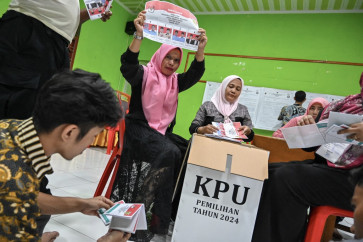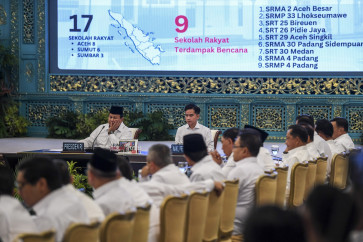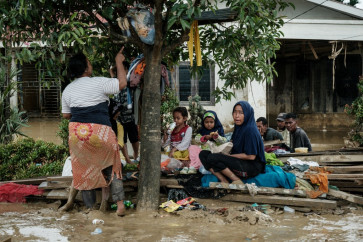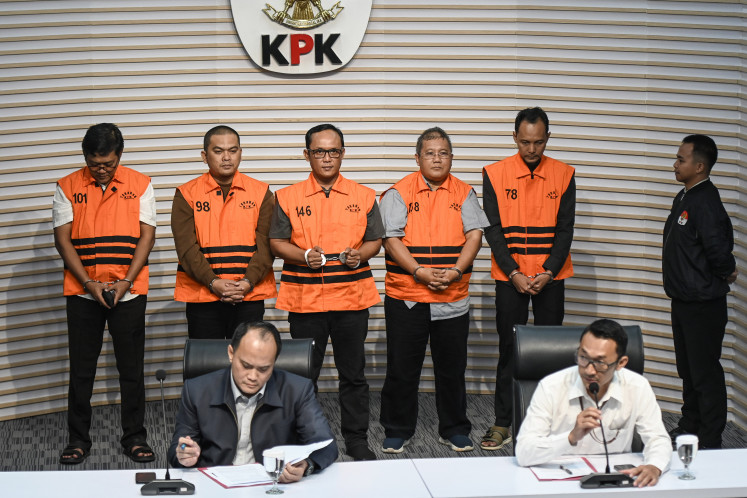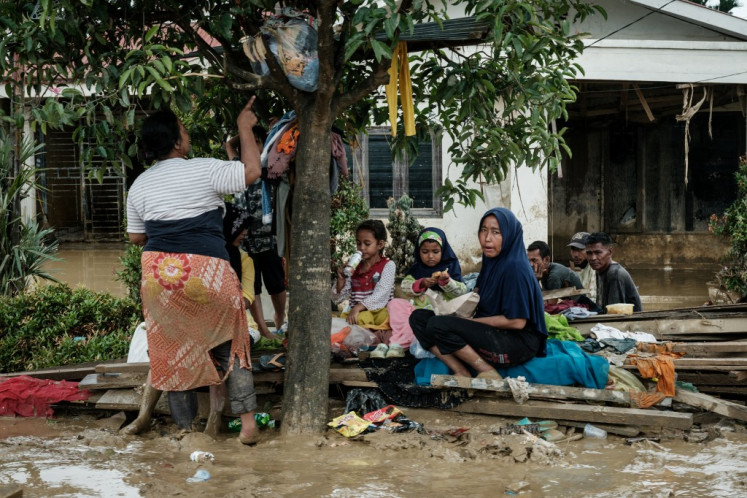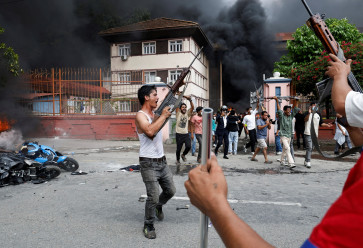Popular Reads
Top Results
Can't find what you're looking for?
View all search resultsPopular Reads
Top Results
Can't find what you're looking for?
View all search resultsNepal’s Gen Z revolt: The economic lesson for democracies
The violent protests in Nepal demonstrate that democracy and development are inherently intertwined, and that governments must balance the dual goal of economic growth and shared prosperity.
Change text size
Gift Premium Articles
to Anyone
 People wielding weapons looted from the Supreme Court take part in a demonstration in front of the top court in Kathmandu on Sept. 9, 2025, to protest the 19 people who were killed the previous day during anticorruption protests, initially triggered by the Nepali government’s ban on social media platforms. (Reuters/Bikram Rai)
People wielding weapons looted from the Supreme Court take part in a demonstration in front of the top court in Kathmandu on Sept. 9, 2025, to protest the 19 people who were killed the previous day during anticorruption protests, initially triggered by the Nepali government’s ban on social media platforms. (Reuters/Bikram Rai)
T
he turmoil in Nepal is more than a political crisis; it is a profound lesson in how democracy and development are intertwined. Institutions, elections and parliaments deliver democracy, but its substance comes from economic progress that is widely shared. Without a sound foundation, democratic systems become fragile, vulnerable to frustration and prone to unrest.
In recent weeks, Kathmandu has seen mass demonstrations led by Generation Z. The immediate trigger was the government’s abrupt ban on 26 major social media platforms, including Facebook, WhatsApp and YouTube.
For young people, this was not merely a technical issue but more an attempt to silence their voice. The protests escalated into deadly clashes, forcing the resignation of prime minister K.P. Sharma Oli and ushering in an interim government.
Yet the deeper drivers lie in the widening gap between economic and social expectations. Nepal’s democracy, established in 2008 after the monarchy was abolished, has been plagued by unstable coalitions, corruption and a political class often seen as unresponsive. Meanwhile, the country’s economy has struggled to provide the basics that sustain both daily life and long-term trust in the system.
The Nepal case underscores that democracy and economic development are not parallel tracks but deeply intertwined. Political stability enables growth, but growth that is narrow or unequal undermines stability. A functioning democracy must therefore balance two goals: generate economic growth and ensure that growth is broadly shared.
This balance is not abstract. It means creating jobs for young people, ensuring access to basic education and health care and guaranteeing that no family is left behind in the pursuit of prosperity. It means securing food, energy and water as nonnegotiable foundations of daily life. It also extends to housing and clothing: basic dignities that, if absent, leave citizens feeling excluded from the promise of development.
Nepal’s population of nearly 30 million is strikingly young. Around 40 percent are under 25 and more than half are under 30. This youthful majority should be an engine of innovation and growth.


